Freddy Mamani Silvestre is not like other Bolivians. An indigenous Aymara (a prominent indigenous group in Bolivia and Peru, with smaller populations in Argentina and Chile), Freddy once lived in a small house made of earth blocks and paja brava, a local grass, in the community of Catavi, at the center of the La Paz region of Bolivia high in the Andean Plateau. Now he lives in Bolivia’s second most populated city—El Alto. There Freddy has built majestic Andean palaces called “Cholet,” provoking intense debate and captivating locals and foreigners alike. Since completing his first major work in 2005, Freddy has visually transformed the urban aesthetic of a city that was once Bolivia’s poorest, taking on all of the most interesting projects in one of the country’s fastest growing urban centers. While Freddy’s colorful architecture is highly regarded around the world, he says this is the first time a Bolivian Aymara has set out to conquer Europe.
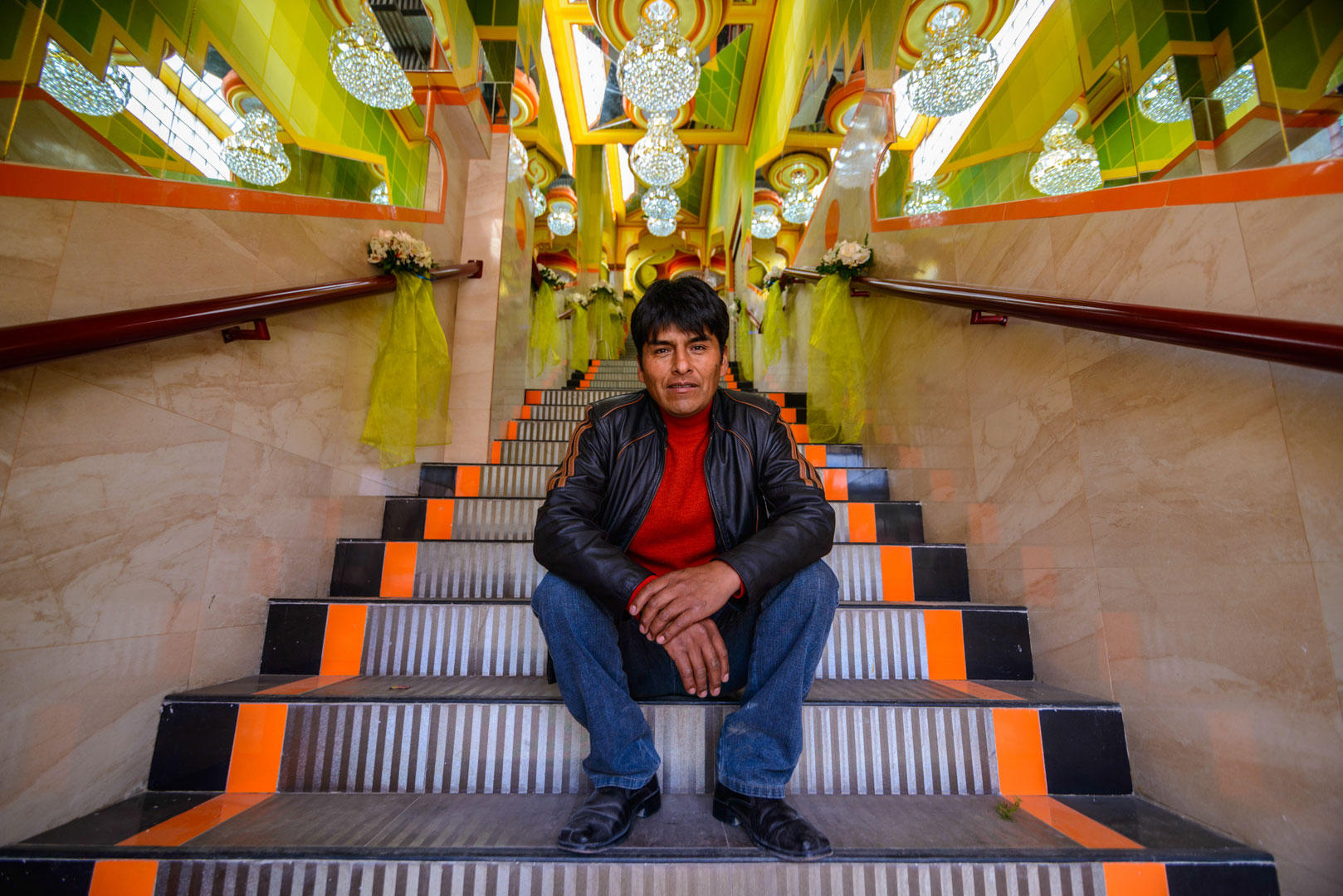
Bolivian architect Freddy Mamani dreams of transforming El Alto down to every last theater and park. ‘I would paint my whole city.’ PHOTOGRAPHY BY JUAN IGNACIO SEVERIN.
When did architecture first catch your interest?
As a little kid I started playing with dirt, making roads, bridges, and houses of all different sizes. One time I climbed the tallest mountain in my community—I liked looking down from the top and watching the cars go by on the highway. I always dreamed of going to the city, of being able to build real houses. After finishing my military service as a young man, I began working with my dad, building houses in the city of La Paz. That was my real education.
These days, more than just being an architect, I’m a designer, an artist. The spirit of construction flows through my veins. I’ve felt it ever since I was a kid.
How did you develop your architecture company?
My company’s called CONSTEC – MJ, and it’s a family undertaking. I work with all my siblings. Like all businesses, we have good times and bad times. Family is my inspiration. I like working closely with my family. We’re very tight-knit. As of right now, my siblings and I have completed over 300 projects and have constructed over 100 buildings, all under the brand of New Andean Architecture, which is more commonly referred to as Cholet.
What motivated you to become an architect?
Honestly, before graduating with an architecture degree, I’d already built over 100 houses around the city. My principle motivation for studying architecture was to demonstrate to the academic world that you can design and build houses using ancestral knowledge. Our academics are always taking the practices of highly developed countries as their benchmark and not recognizing the value of our own knowledge. For that reason, I prefer to teach myself how to build and design.
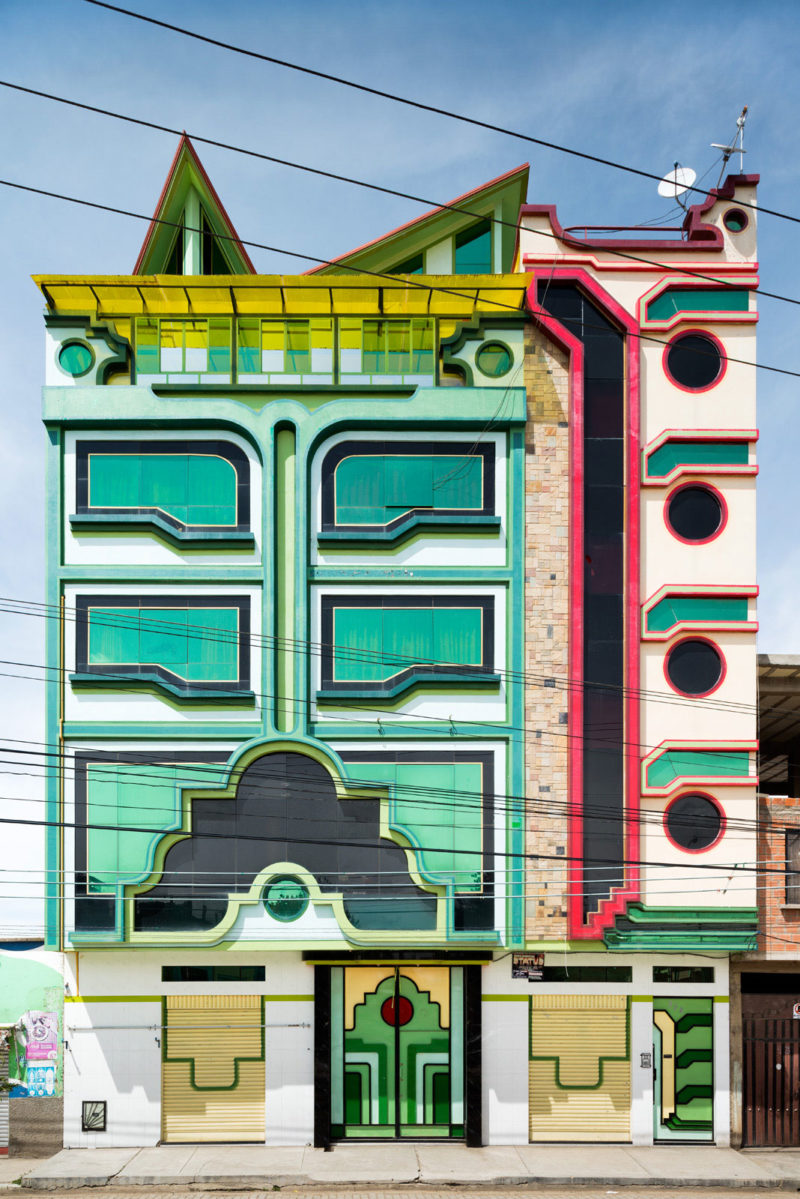
PHOTOGRAPHY BY PETER GRANSER: ‘EL ALTO’
How do you start a new building design? What’s your process?
I never build the same thing twice; all my work is unique. I work very closely with my clients. We visit past projects together, and they almost always end up telling me that they want the best, most beautiful house. Together we plan out the house’s spatial distribution, its functionality, the quality of the materials and the principle colors. And from there, they give me the freedom I need to create. It’s while using a whiteboard that I’m able to become inspired.
What’s a typical workday for Freddy Mamani?
I work just like any other Aymara from the city or the country. I wake up really early. By 5 in the morning I’m on my feet, along with my wife, who always goes out with me. I have an old van—I use it to haul all the materials I’ll need during the day—and I begin to travel around to the different sites. Because I work alongside my employees, I have to be present at the site. They don’t have the blueprints; I have to write them out on the white walls and on the floors. I put them there, all the instructions. I’m not an office guy; I need to be talking with my workers and clients. So I’m always dirty, covered in lime and cement.I don’t have much spare time. A lot of journalists and researchers come looking for me, but I try to concentrate on my work. Generally at night I work from home, drawing new designs. I lot of the time, inspiration hits at 3am and I get up to work.
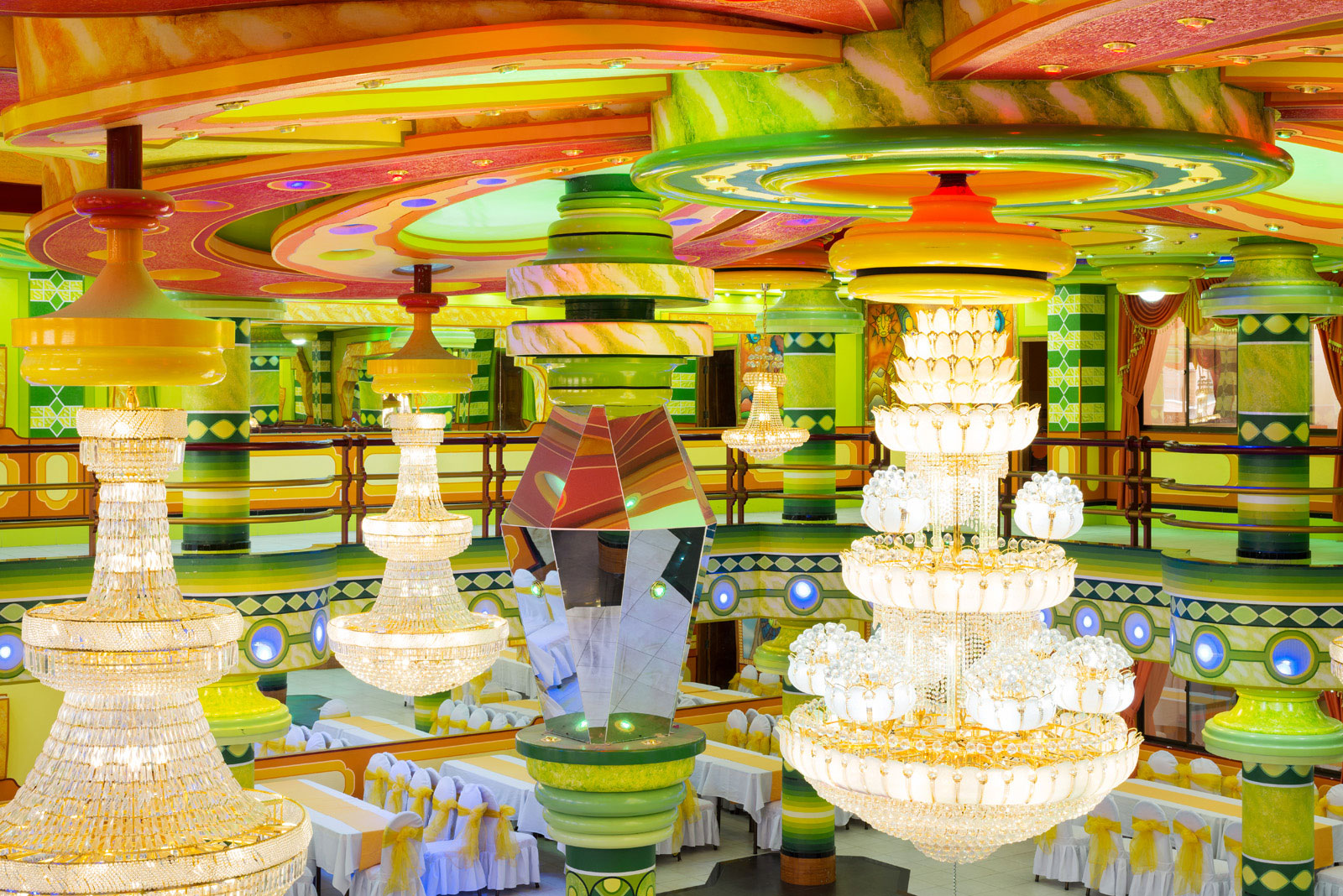
PHOTOGRAPHY BY PETER GRANSER: ‘EL ALTO’
What sacrifices have you made for your career?
Everything I’ve achieved is the result of many hours of work, and for some years I’ve practically renounced parties and social events. I consider myself a reserved person, and I try to spend my free time with my children and my wife. Family is the biggest thing I’ve had to sacrifice. Due to my frequent trips abroad, I’ve had to spend long stretches away from my family. That’s one of the costs of being an almost-famous person. (laughs)
“I never build the same thing twice; all my work is unique.”
Which other designers or architects inspire Freddy Mamani?
I’ve always been inspired by the ruins of Tiwanaku, for the quality of the ruins. It’s extremely precise, each block of stone in its exact position. It’s extraordinary. Unfortunately, we don’t know the names of the architects who built it. But I also like the work of Antoni Gaudí and Santiago Calatrava; those two were crazy. I dream of taking their madness to the next level.
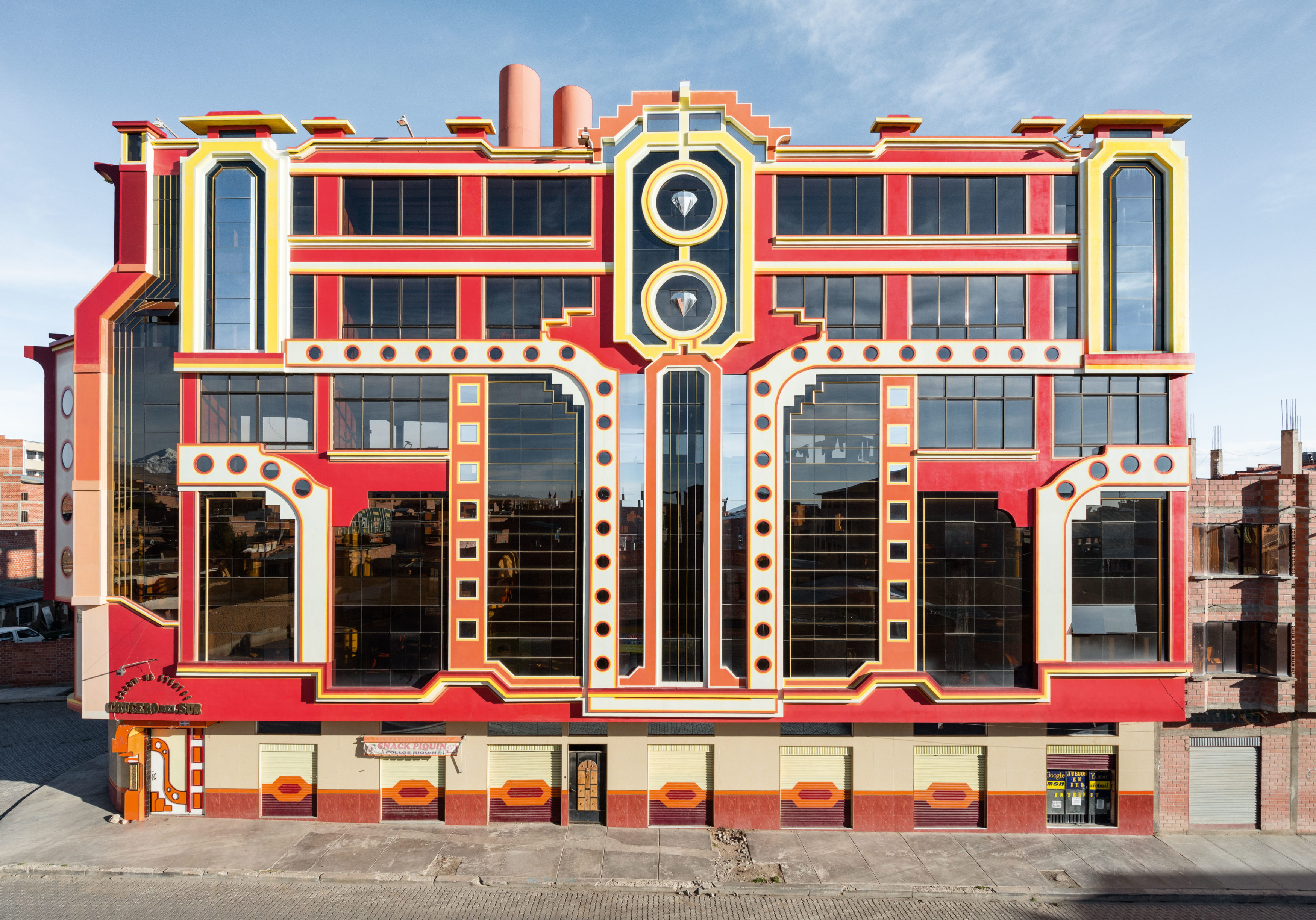
Freddy’s work inspired Bolivian fashion designers to fuse New Andean Architecture with haute couture at a 2018 runway show. Beatriz Canedo Patiño, Maman Fine Art, and other major brands created looks inspired by Freddy’s cholets. PHOTOGRAPHY BY PETER GRANSER: ‘EL ALTO’.
What does the future look like? What are your plans for the rest of 2018?
When I walk through the streets of my city, El Alto, it makes me want to throw myself into politics and run for mayor. I would dedicate 90% of my time to my architecture. From that standpoint, I would build theaters, bridges, vistas, bike paths, parks, supermarkets, and everything else within the realm of possibility. I would paint my whole city according to the style of the architecture. But I don’t know, politics is really exhausting; I don’t think I’d have the patience. For now, I want to conquer Europe. I have a really good opportunity. In October 2018, a small sample of my work was exhibited at the Fondation Cartier museum in Paris, France. I’m very excited.
What has been your biggest architectural challenge in 2018?
This was and still is a beautiful year. Our architecture inspired great fashion designers in my country, with some really interesting criticism at the national and international level. I’m building the first Freddy Mamani hotel in El Alto’s Andean foothills. And I’m hoping that the exposition of my work at the Fondation Cartier will attract investors so I can bring my work to other parts of the world. I dream of leaving a footprint in Las Vegas or Dubai. In the end, I don’t have a defined limit. Anything can happen.
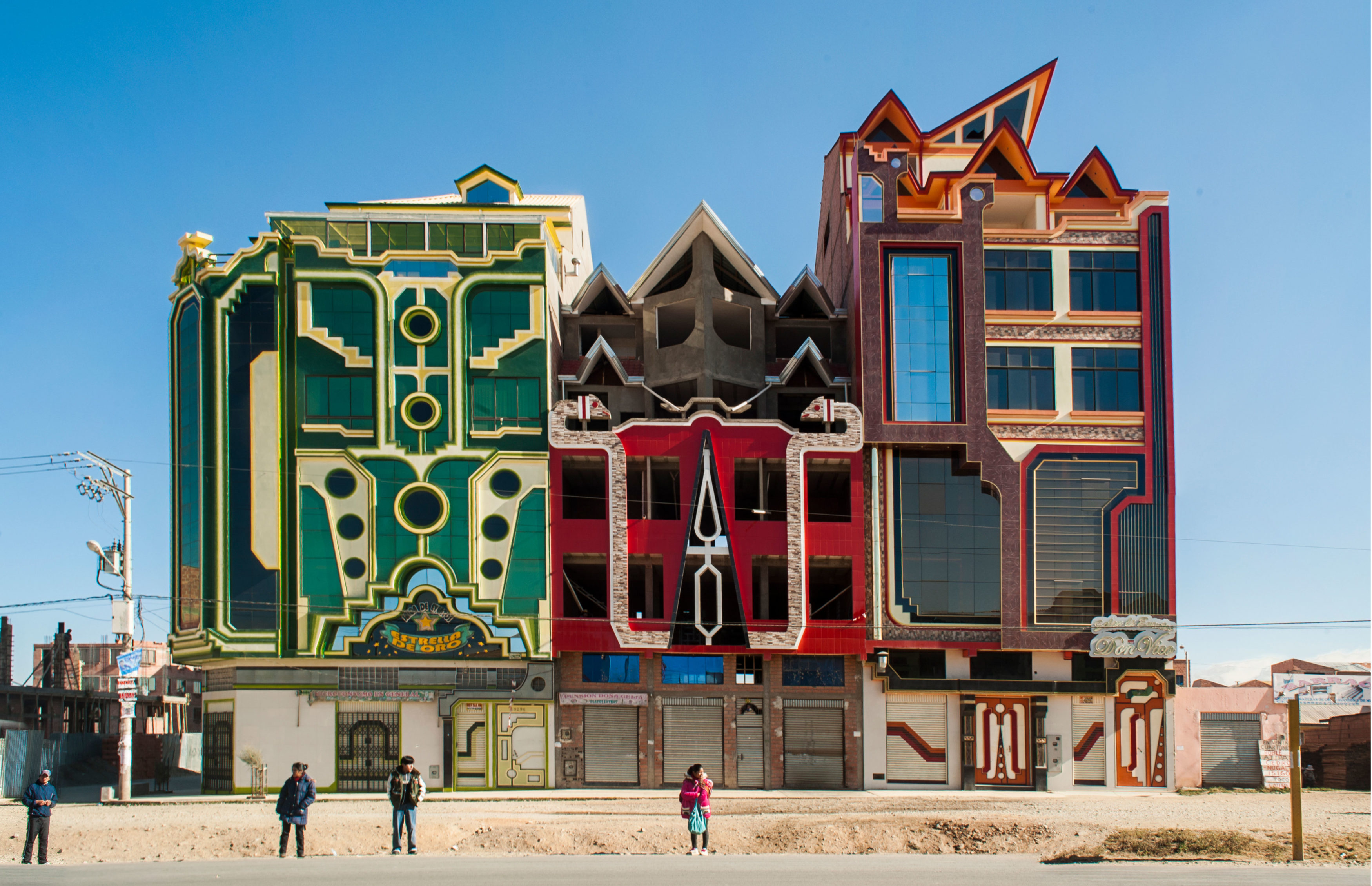
ARCHIVO FREDDY MAMANI SILVESTRE
Translated from the original Spanish by Miranda Dean


